It is Friday 28 December 2018, and I am in New Iberia, Louisiana, preparing to chase the Louisiana & Delta Railroad’s train on the Abbeville Branch.

The humint that I had that day suggested that the branch, which is served sporadically but about once per week or so, would be served on this day. So, the way to tell if this was true was to head over to the interchange yard to see what was happening there.
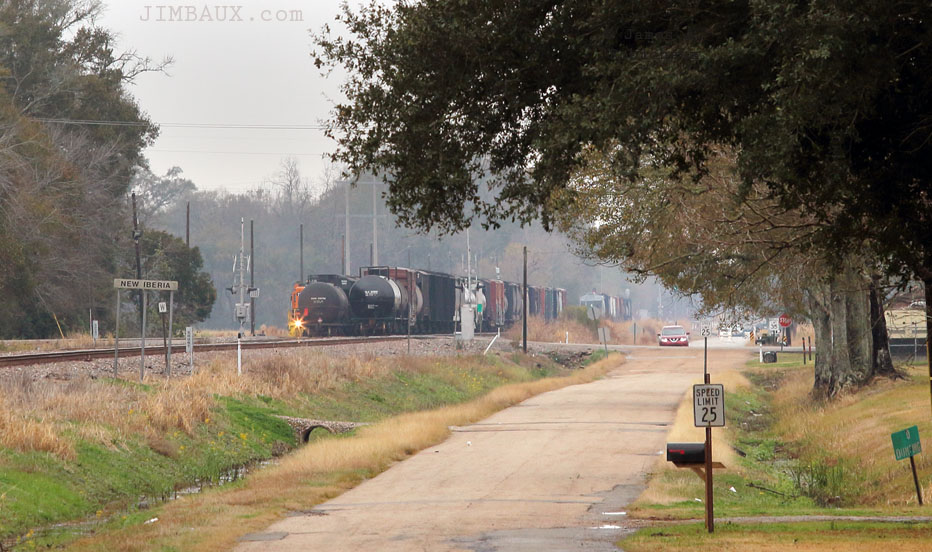
I read the first part of the preface of What’s Math Got To Do With It, and I took photographs on the cell phone up to number nine, right before the 1708 shoved a cut of about 30 cars into the outermost track of The Interchange yard and the eastbound BNSF Railway manifest train came by.
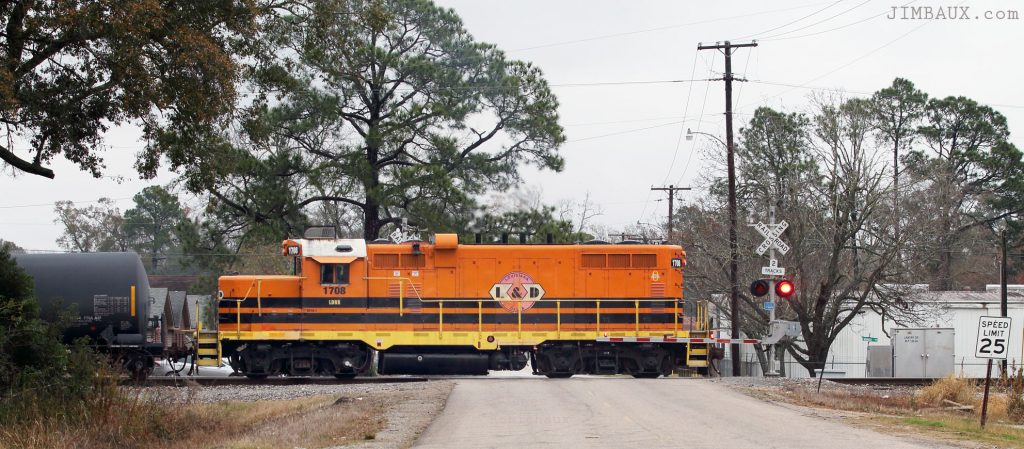
I don’t have a history with the 1708, but that is a classic EMD profile!
Hey, look at that plate steel on that semi-bulkhead flatcar, look at that old SP boxcar, and look at those two-bay hopper cars.
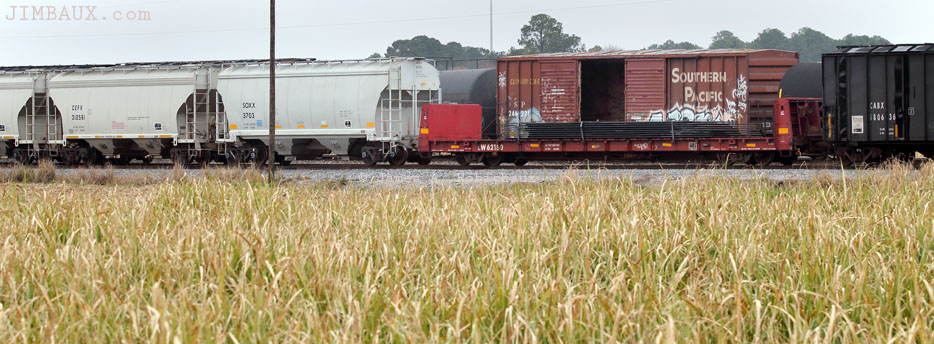
Here is a classic southern Louisiana scene, with transportation vessels of locally produced products moving via different modes of transportation.
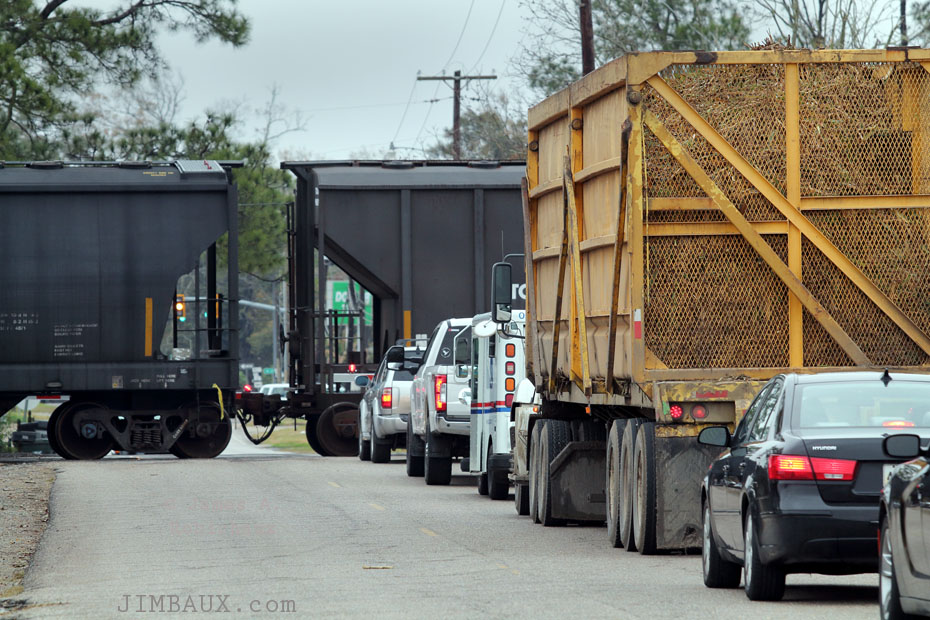
That is a loaded sugarcane truck, coming from a local sugarcane field and going to a local sugar mill, waiting on S. Landry Drive while carbon black, coming from one of the carbon black plants in nearby St. Mary Parish, moves via rail.
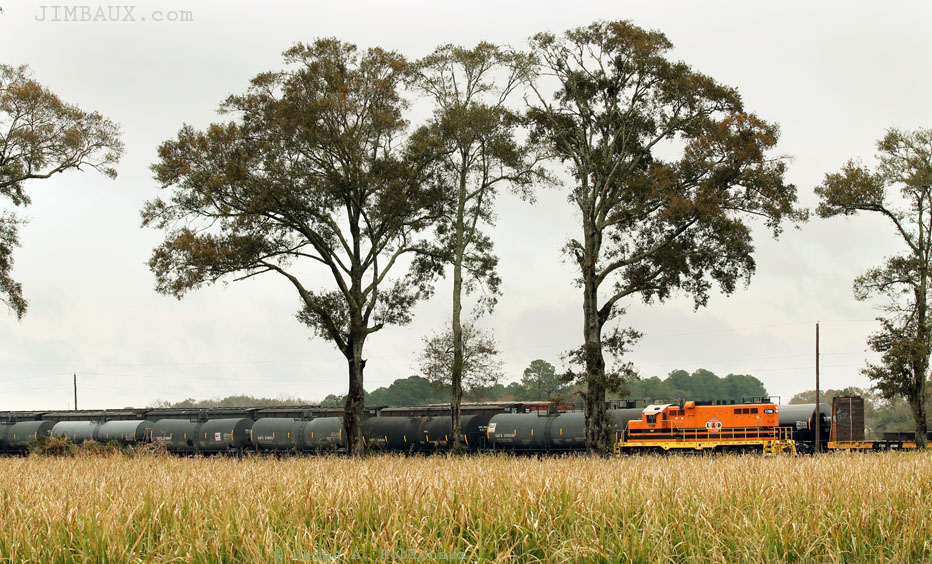
it is 11:31 right now, and the 1708 is about to move again with another cut.
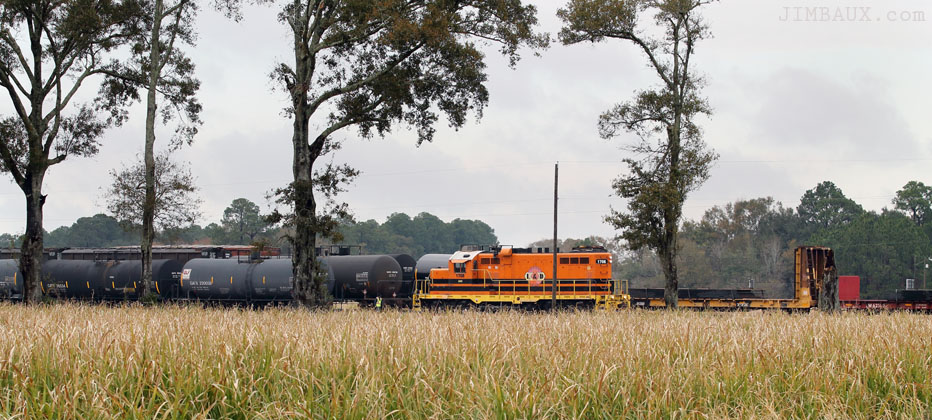
I have eaten all my oranges and most of my strawberries, plus the two Omelet Biscuit things that I bought at Hardee’s earlier. And I am still hungry! I’ll have to chew down those almonds that I have a remaining.
I have done all of this while parked in front of the for-sale Church on the corner of South Landry drive and Obie Street, in view of The Interchange yard across a sugarcane field. Now, the 1708 is shoving this cut of cars, with the two Twin Brothers cars next to the locomotive, further into the yard.
I don’t remember how it happened, but, somehow, I ended up downtown, eating lunch with my ol’ pal Perry.
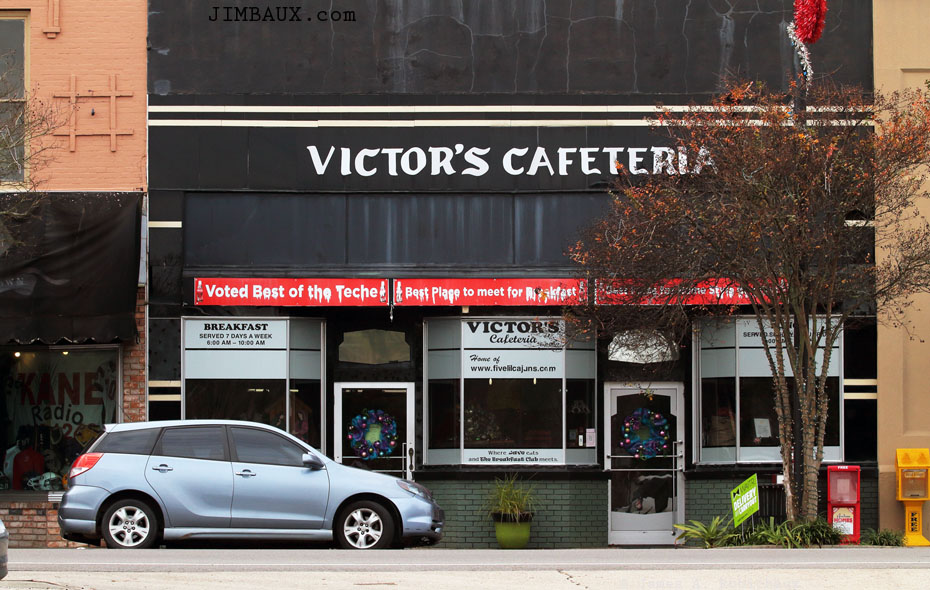
It was good! I am the dirty dork who brought a scanner into a local cafeteria. Hey, I can’t miss the train that I came here to find!
After Perry and I parted ways, I walked across the highway to the parking lot to take both the above picture and the below four images, the first being of Bayou Teche.
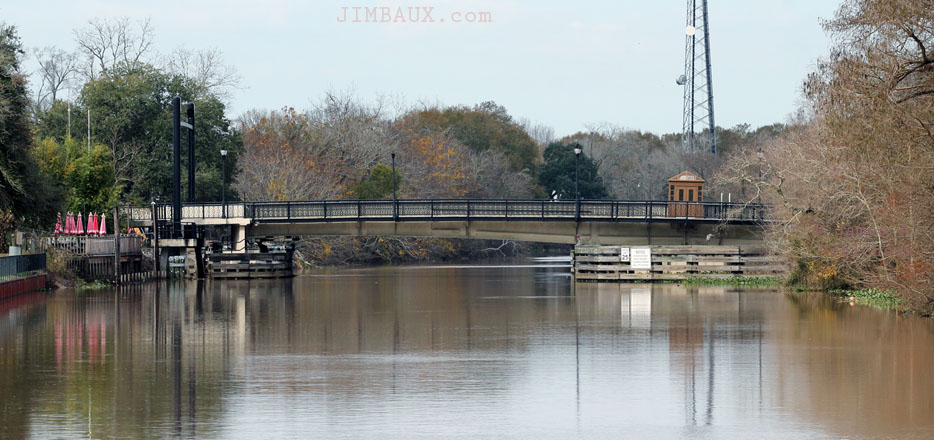
Here is the KANE radio station, right next to the cafeteria.
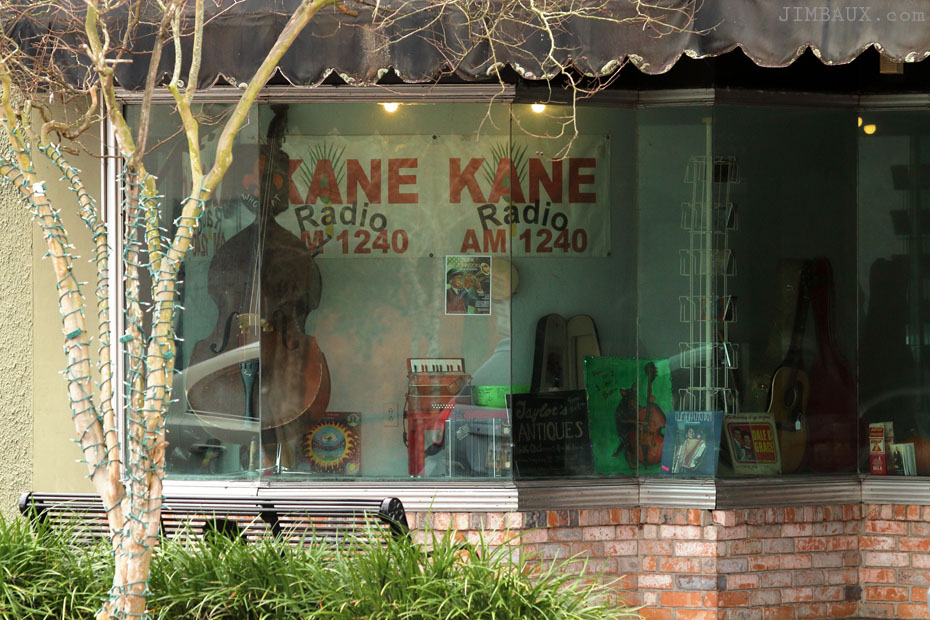
Let’s get a few shots eastward along Louisiana Highway 182, the former US Highway 90, before we get out of here.

New Iberia has a neat downtown area that I haven’t enough explored.

I guess that I may check it out next time that I am in town, which is likely to be around Mardi Gras.
So, I really want to know what is happening with this plate steel.
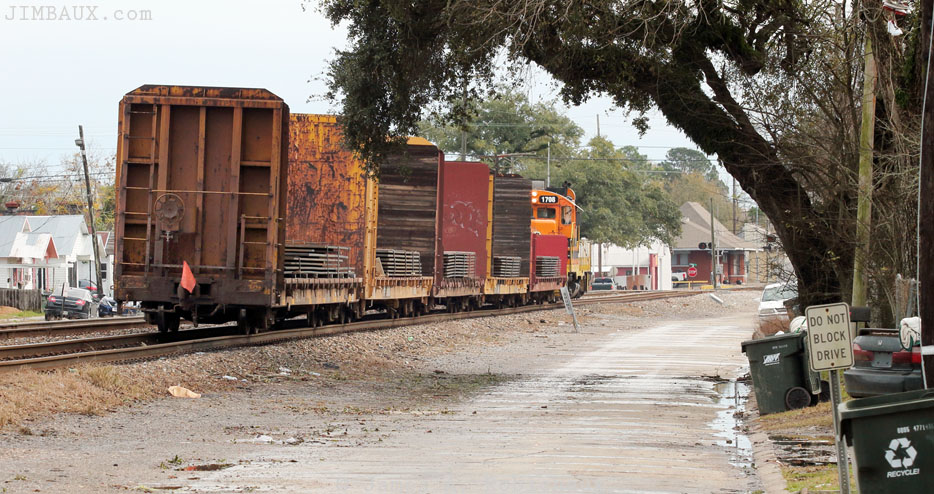
This was a set of five loads bound for Twin Brothers shipyard, which is at the end of the Cypremort Branch, but what I was really wondering was why the five cars bound there were being put together here in New Iberia and taken eastward by themselves instead of mixed with a bunch of carbon black hoppers bound for the head of the branch in Baldwin.
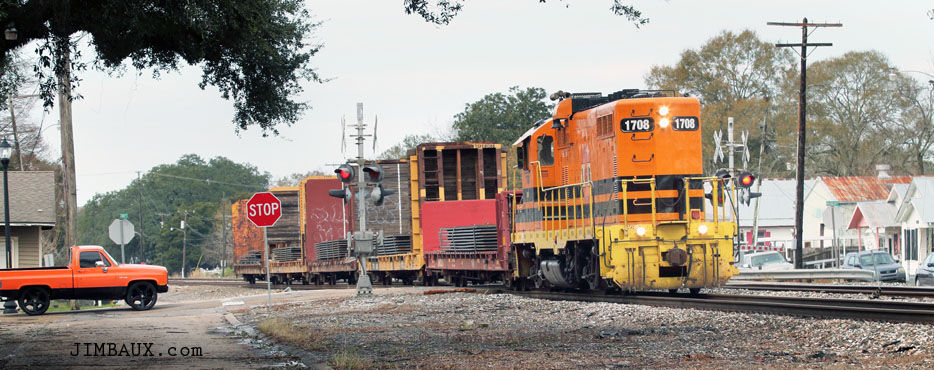
That made me worry that the steel would be offloaded onto truck somewhere between here and the shipyard. I really would love to see these cars delivered down that branch straight to that shipyard, because, with railroad activity at the Port Of West St Mary otherwise nonexistent, it’s a railroad of nothing but carbon black hopper cars, which do not at all excite me.

I don’t know why, perhaps because of shunts and signals, but this job had to pull forward and then reverse back across the crossing, without (as best as I could tell) moving through any switches.
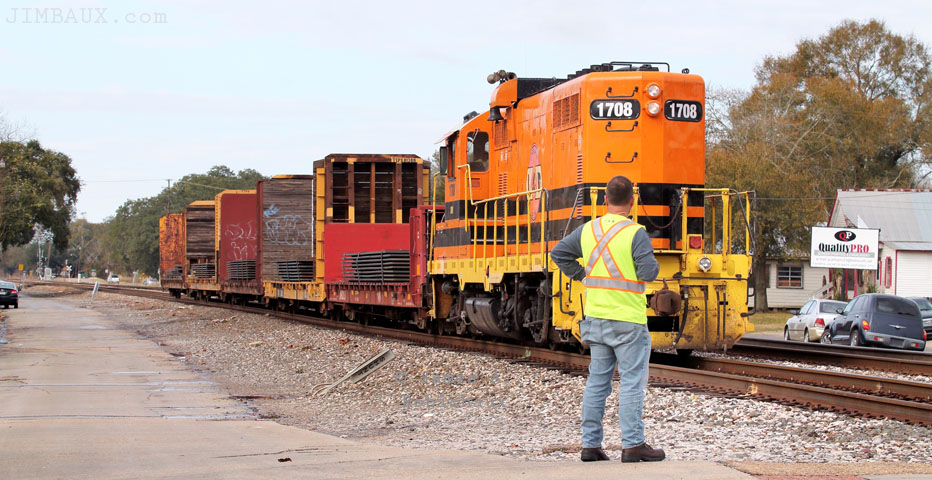
As far as I know, Twin Brothers has been the only customer in the time of the existence of the Louisiana & Delta Railroad that has consistently, even if not regularly, been a receiver of plate steel. So, these images are the closest that I can come to imagining what it would have been like for plate steel to have been delivered to Bollinger Shipyard on my beloved Lockport Branch.
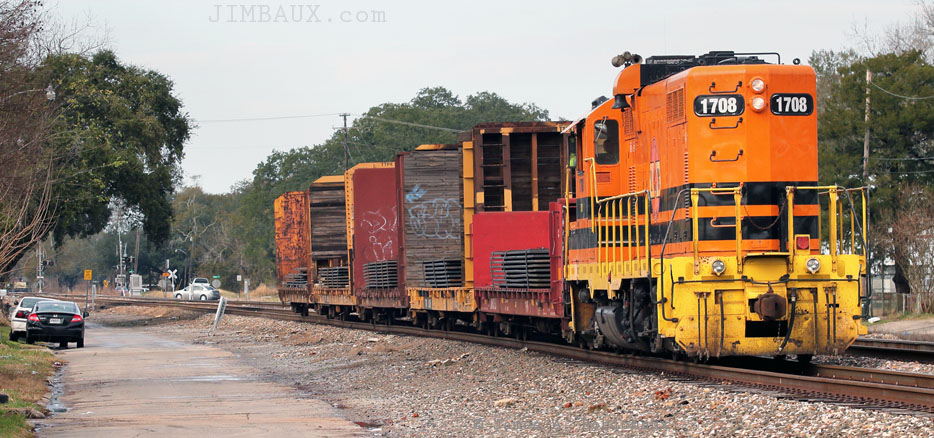
Well, here comes a westbound BNSF Railway empty crude oil train, with a Ferromex locomotive leading.
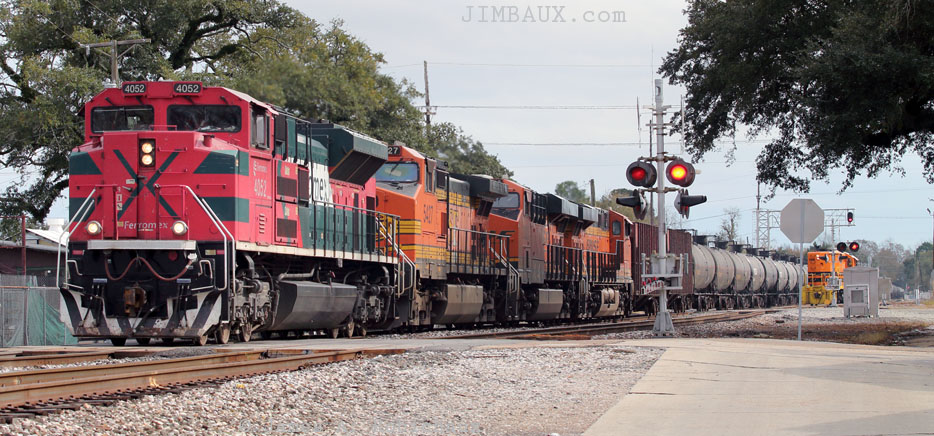
The passing crude oil train and a man cycling in the other direction presented, along with the parked L&D plate steel train, some different photographic opportunities.

Well, that was nice, as I waste away my life.

This is called Dark Alley.
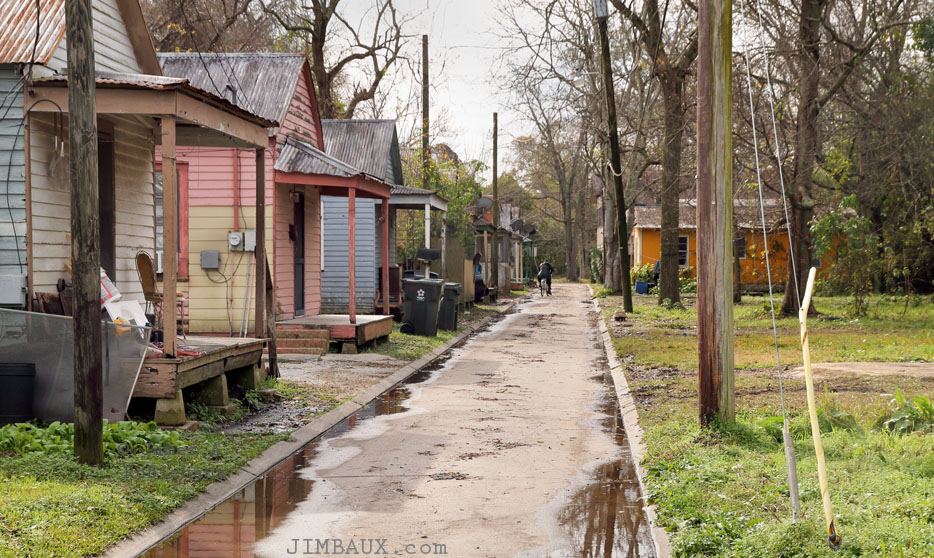
I guess that I will be repetitive and get a few more shots of this plate steel train while waiting for any news about the Abbeville Branch train.
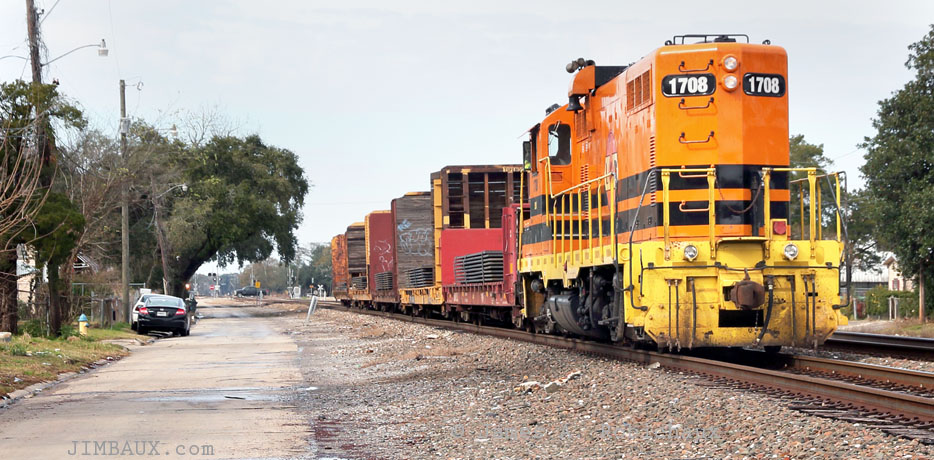
Let’s back off a bit to see more of it.

I want to go home, really. I sense that I won’t have my home for much longer, though I have felt that for some time now.
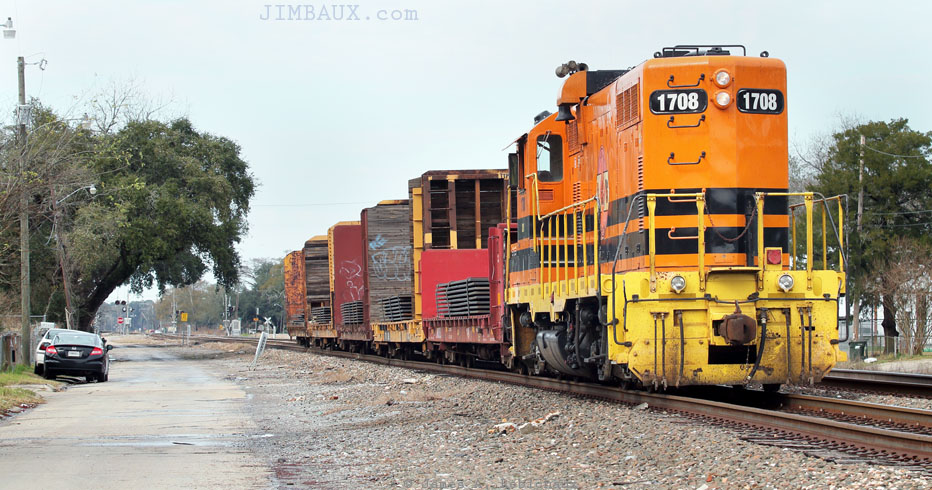
Now, he is moving, and I have moved ahead so that we can see him move.

Oh my god! What is the point of all of this train chasing business in the first place?
I briefly considered chasing this thing to the east to photograph it more in more locations.
But I didn’t do that, because that would mean that I would risk losing the Abbeville Branch train.
The picture above was made at 13:40. The picture below was made at 14:48.
At 14:37, and I am hearing the sounds of a westbound train approaching. I am at the little park, the Martin Luther King Jr. Park area. The LDRR 1850 – the Louisiana & Delta Railroad locomotive that, until about five years ago, seemed to be the L&D locomotive most often assigned to Schriever – is making these long drags and shows in and out of the interchange yard just to build this five-car Abbeville train.
Earlier, the 1708 spent a couple of hours digging five cars out of the yard itself. All of this makes me think that, even though it would cost plenty of money, the L&D might benefit in the long term from building a few additional tracks in the yard, so that each major destination on the L&D can have its own track, so that one yard job can take an incoming interchange cut and just sort the whole thing or almost the whole thing at once.
Below, the 1850 is making some of the final moves before completing the building of what eventuated to be a 35-car train!
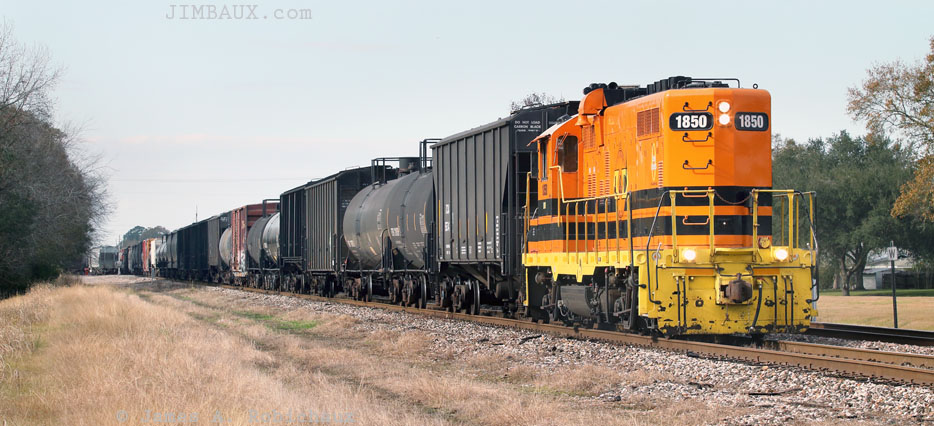
Only five of those cars would be going to Abbeville, though.
Some city employees were gathering trash in the park.
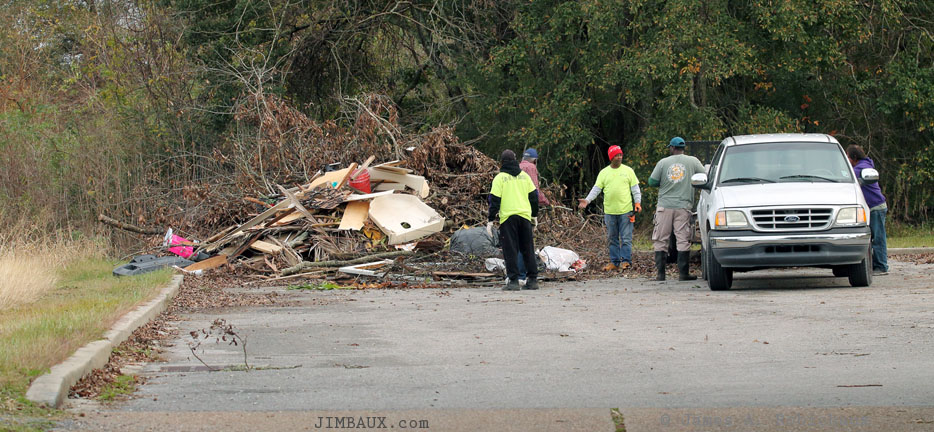
Eventually, I ascertained what was happening. The job had five cars to set out at the RIP track about a mile down the branch, and then there were 25 cars – all carbon black hopper cars – bring to be stored on the Avery Island track, where another job was waiting to shove these cars down that track, and then there were five cars to bring to Abbeville.
Here, at 15:01, is our train stopped on the siding before proceeding to the branch.

Here, at 15:14, is the train moving near the end of the siding, just before the switch to the branch.
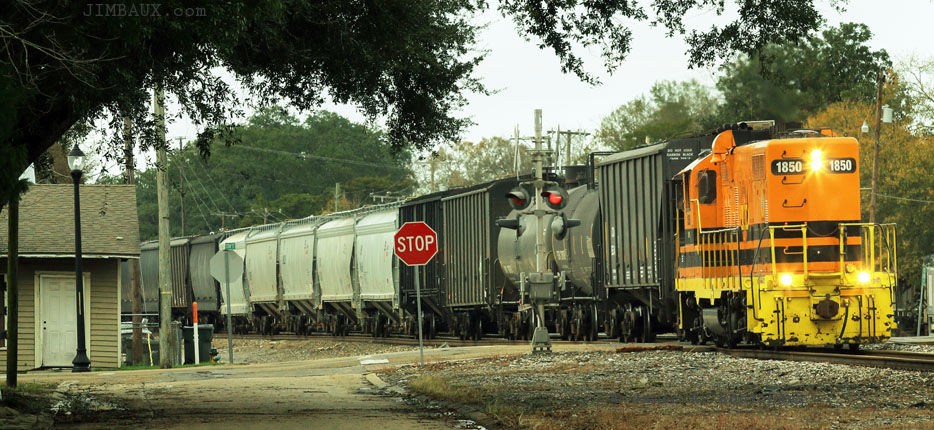
There is our train!
Aren’t you excited?
No?
So, anywhere, here is the train on the branchline, passing the little runaround track where were parked some ballast hopper cars – probably for the Pesson Spur, rumored to be put back in operation given a resurrection of business at Bayou Pipe Coating – as seen from W. Dale Street.
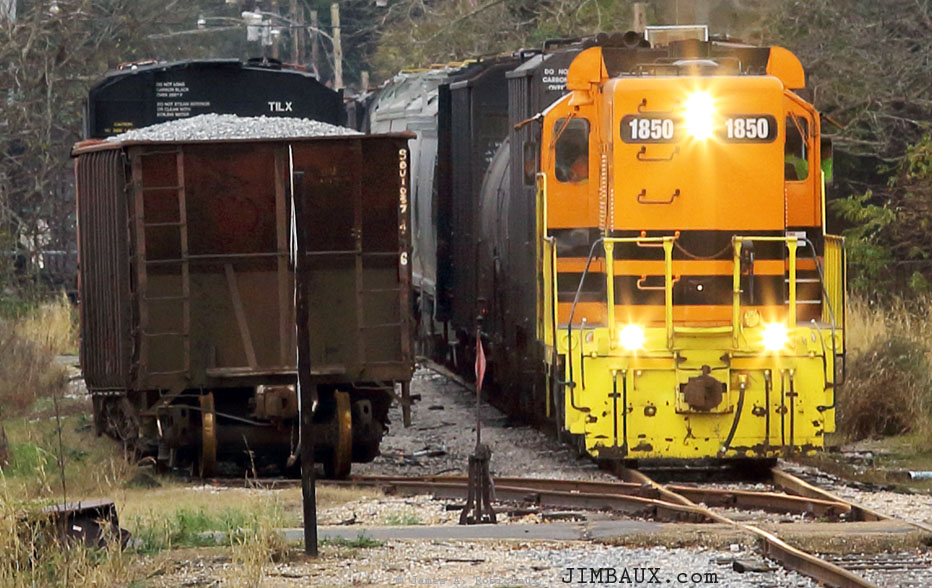
Let’s have a look eastward (or southeastward) on the street.
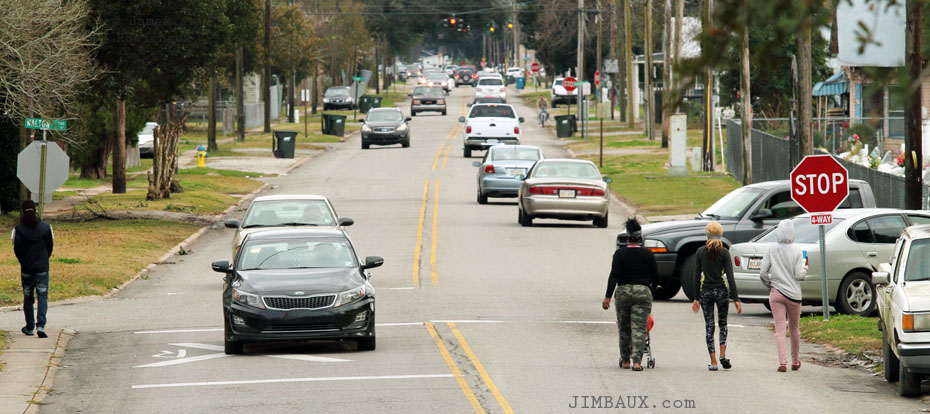
So, now, you can see more of the train.
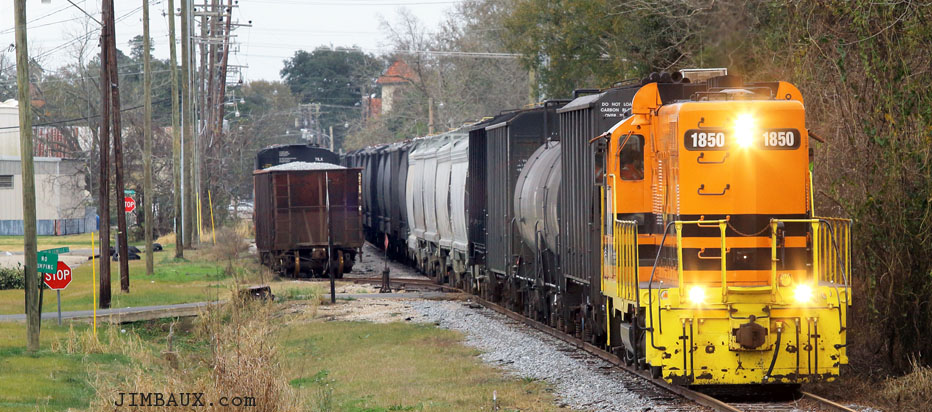
And this is about the last time that you’ll see all three blocks of this train.

Now, at the RIP track (“RIP” means “repair in place”) at W. Admiral Doyle Drive, the train stops and one of the conductors gets out.
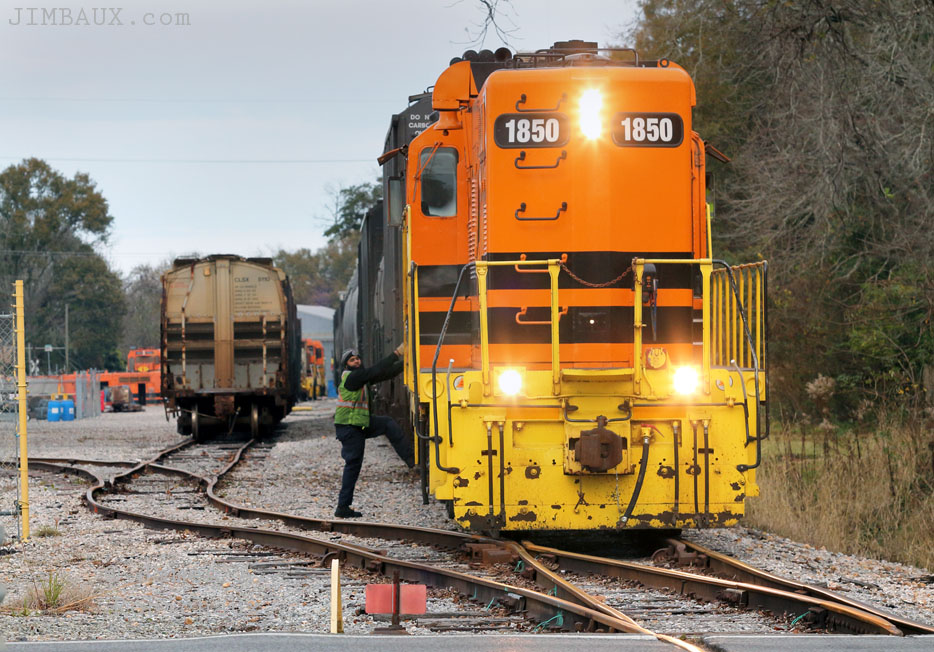
It’s already getting quite dark here, and I am not sure if all of this was worth the effort.

What do you think?
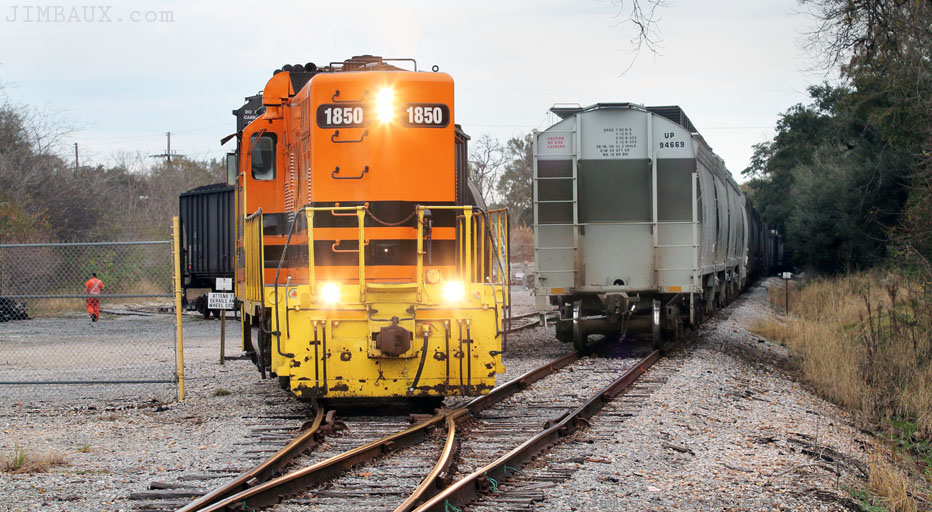
There, you see the five empty rice hopper cars.
Nearly two miles later, at milepost 3 (and you can see the milepost next to the train), we see our train, now with 30 cars.
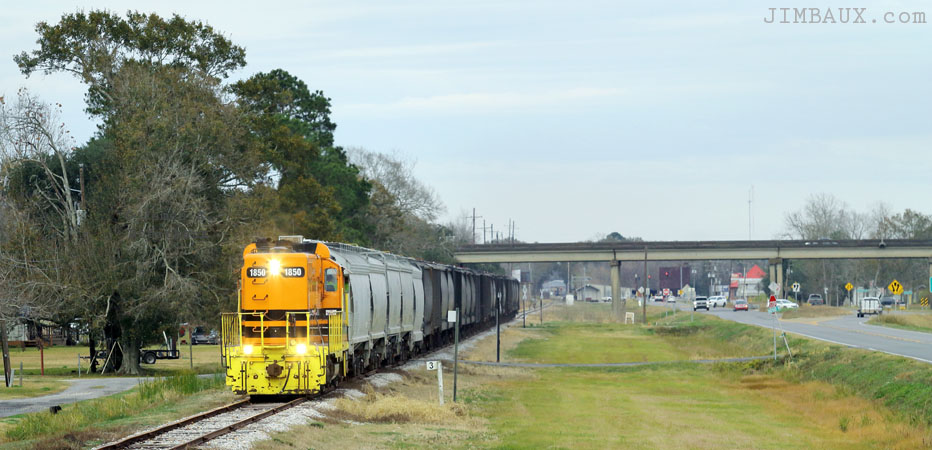
The train is rolling away from New Iberia now.
Here is a closer view, a cropped view.
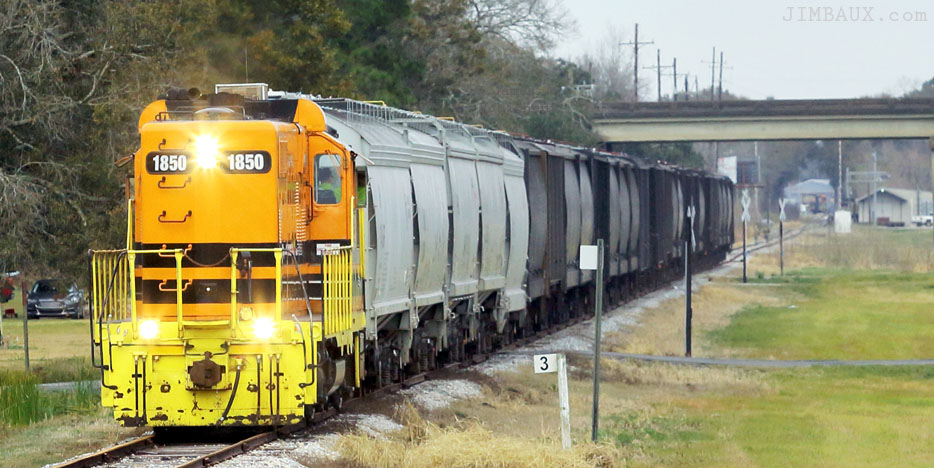
It’s getting dark. I said that already. So, it’s getting darker.
Here we are another mile to the south.
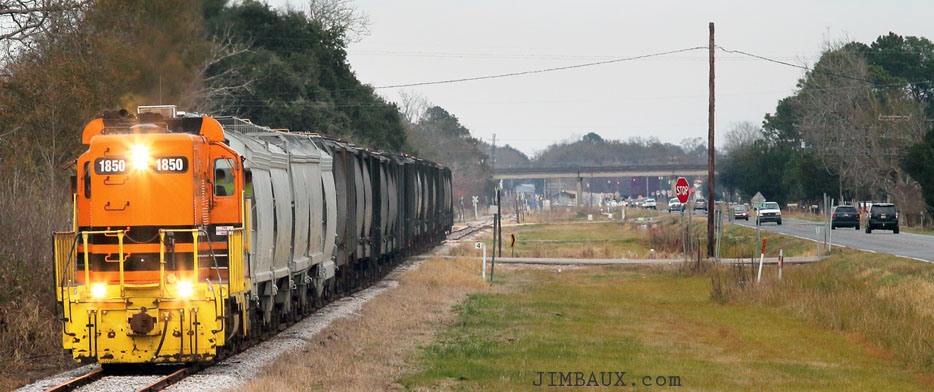
Want to see a cramped, smashed, cropped version of the above image?
No?
Well, that’s too bad!
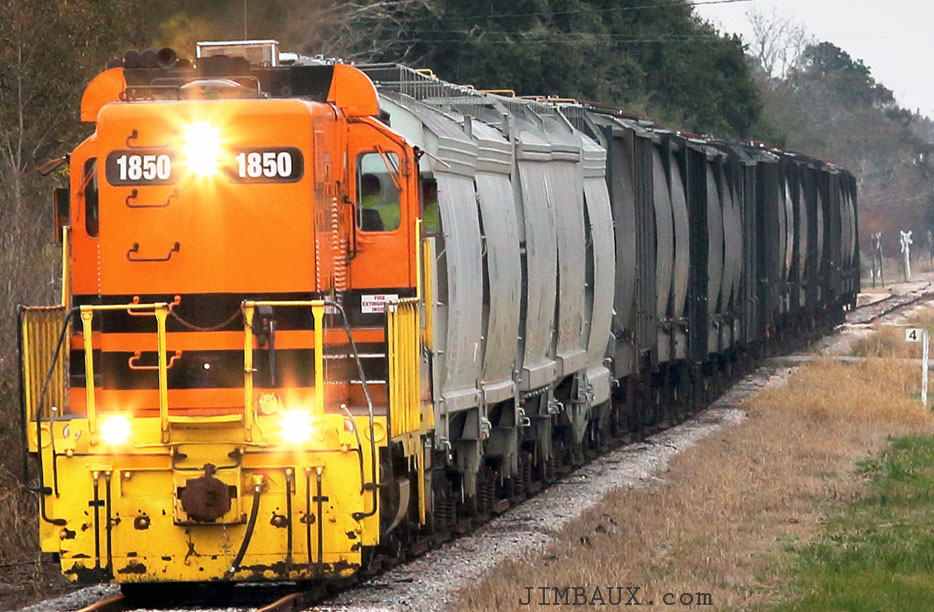
The LDRR 1846 had gone by itself down the branch some time earlier, and I was quite confused about this, but now the reasons for it were starting to make sense, as you now see it parked past the switch at I&V Junction on the Avery Island track.
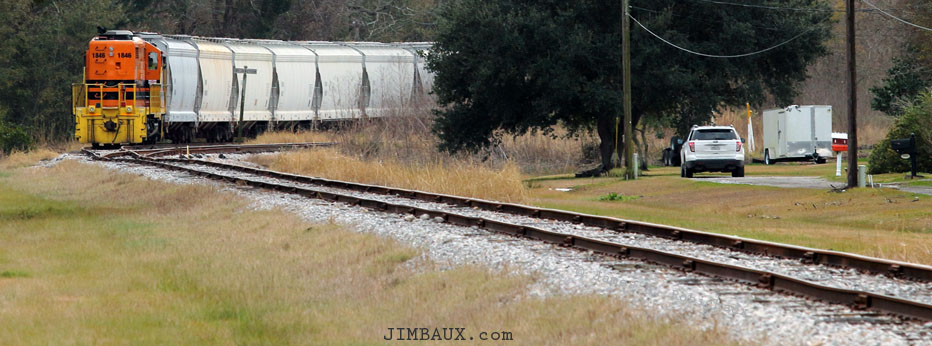
I am not sure, but the general manager of the railroad might have been one of the men working on that job using the 1846.
Let’s see a cropped version of the above image.

Here comes our Abbeville train, approaching I&V Junction.
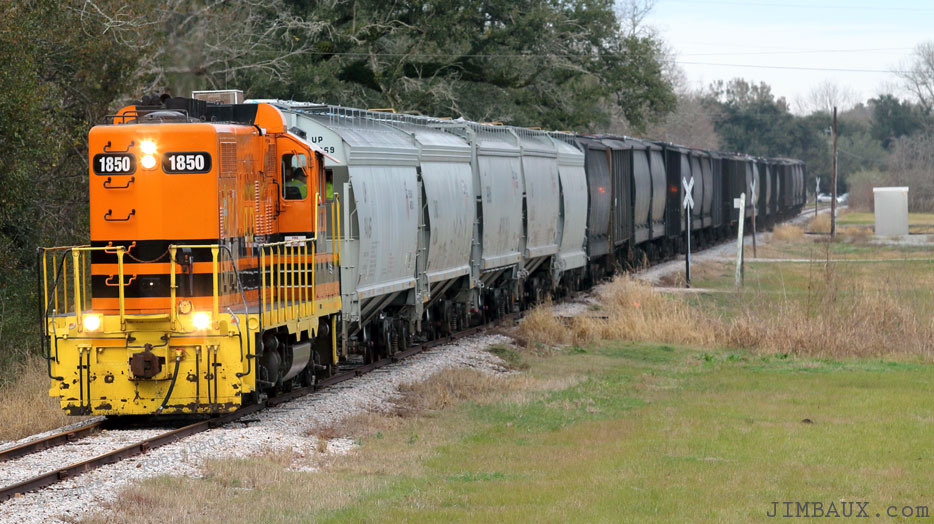
Here is the meet!
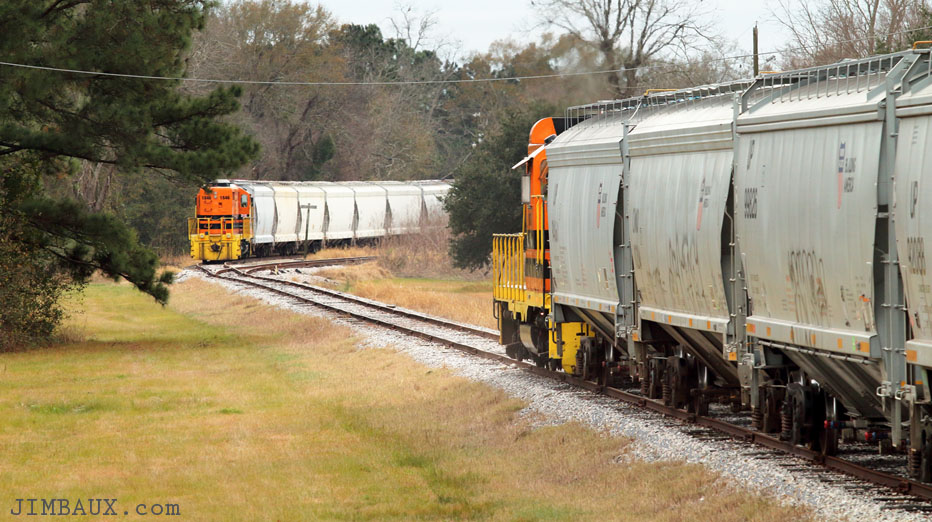
I listened to the conversation between the two crews over the radio, and then I found my way to a very neat place: Emma.
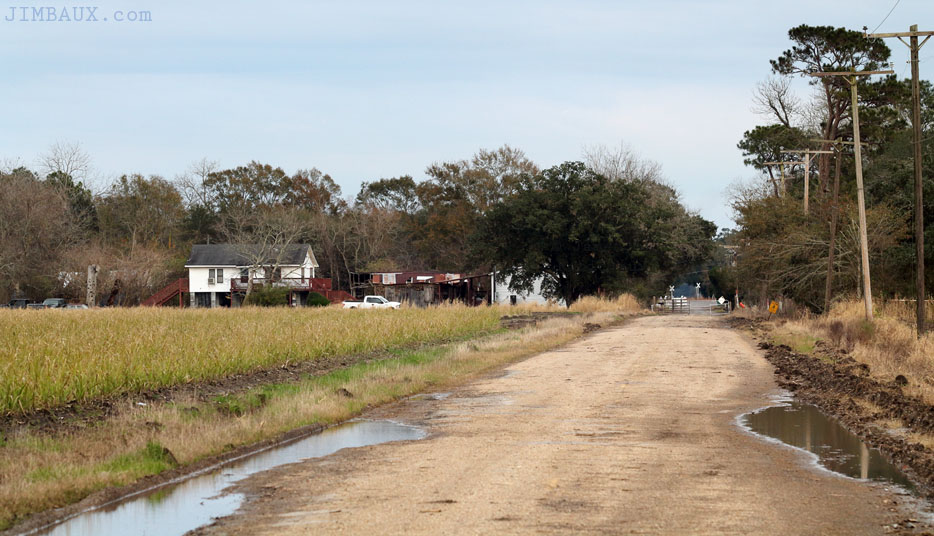
This is the shot. This is what made this expedition worth the effort.
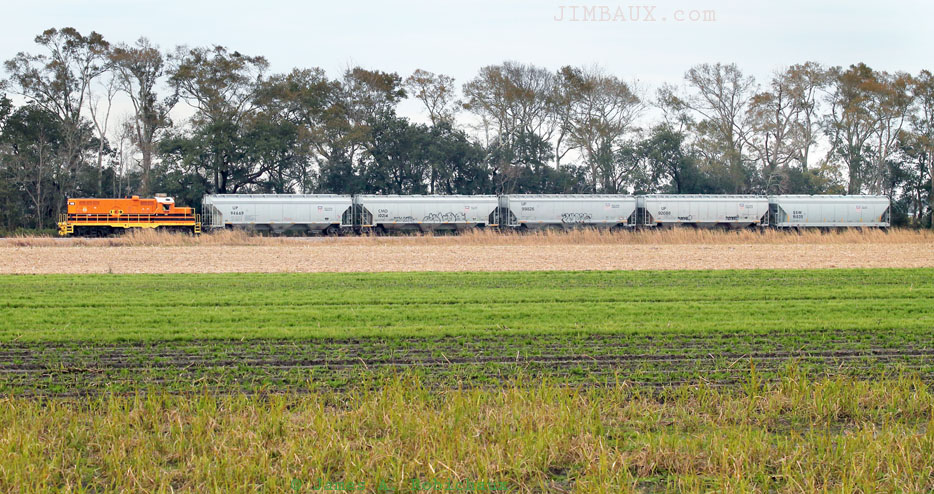
This is what explains, in one of the most effective ways possible, this obsession that I have had for all of my life, that started with that second-story gable window overlooking another Southern Pacific branchline.
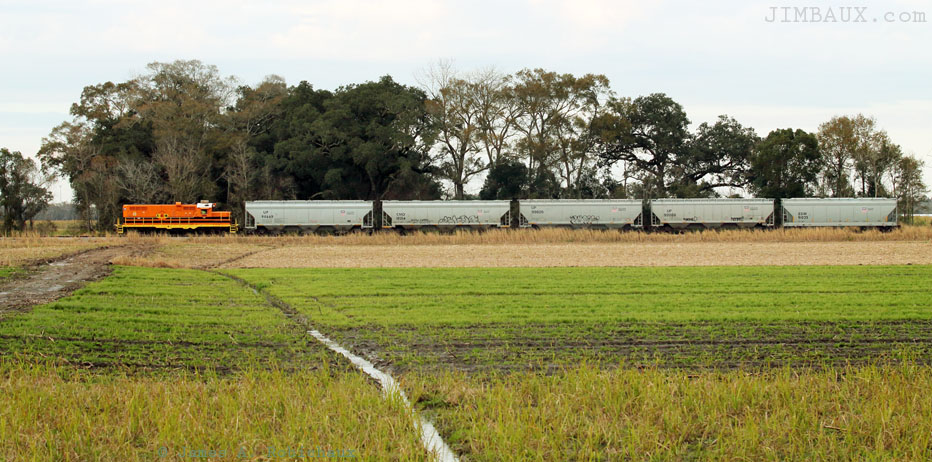
“This is an obsession, Dad. I have never understood it,” Indiana Jones told his father as they were escaping from Berlin.
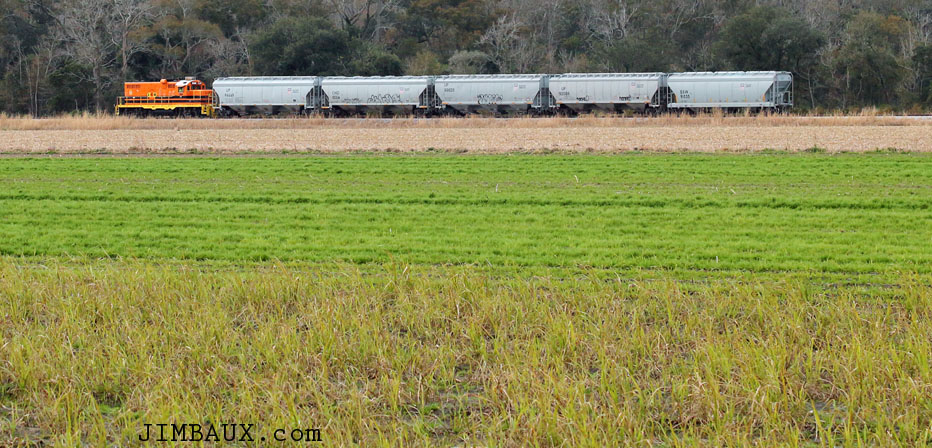
Bye, train, says the sugarcane, says the man-child whose boyhood was by similar trains and sugarcane.

At this point, I should have just gone home.
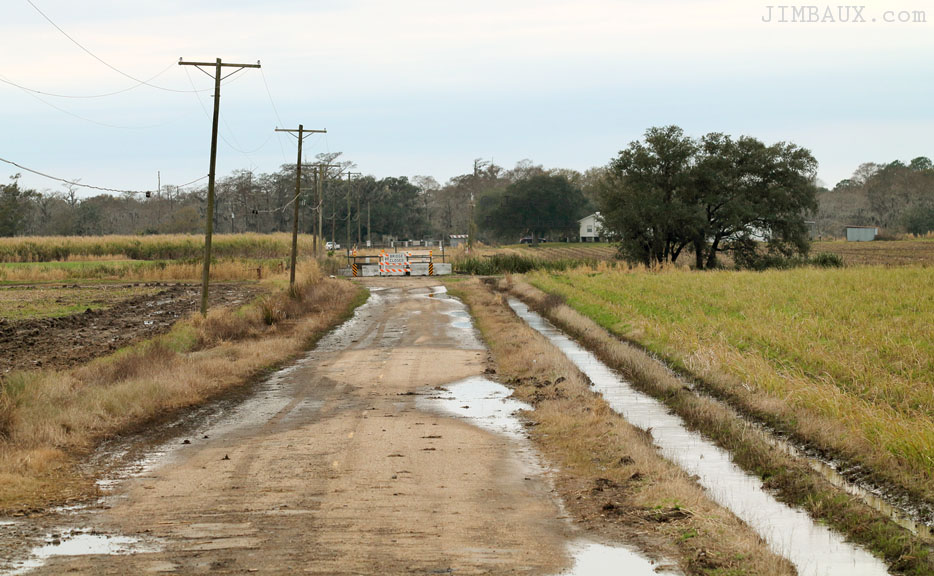
I did, but, on my way out, I stopped to check out what the 1846 was doing.
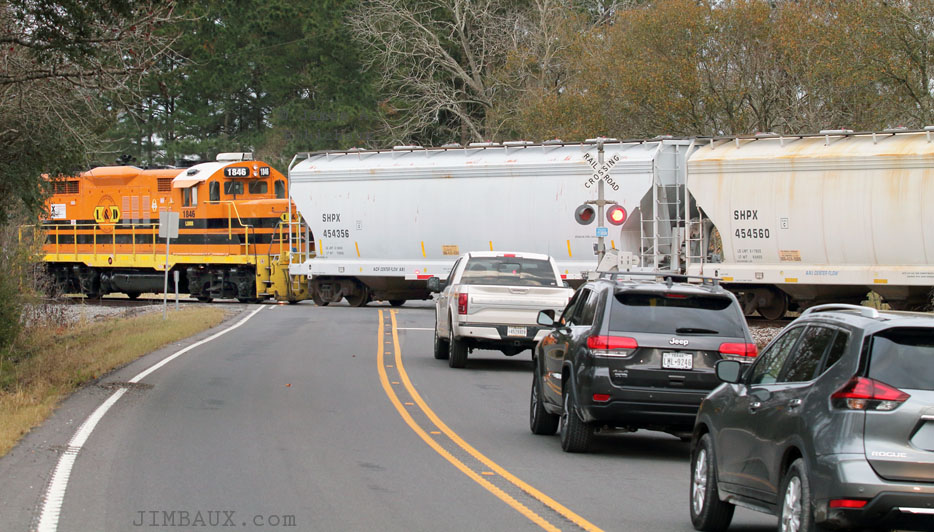
This is the first time that I ever see or photograph activity on this stub track that is all that remains of the line to Avery Island past I&V Junction, which remains in existence in order to serve as a place to store cars, which is what is happening here.
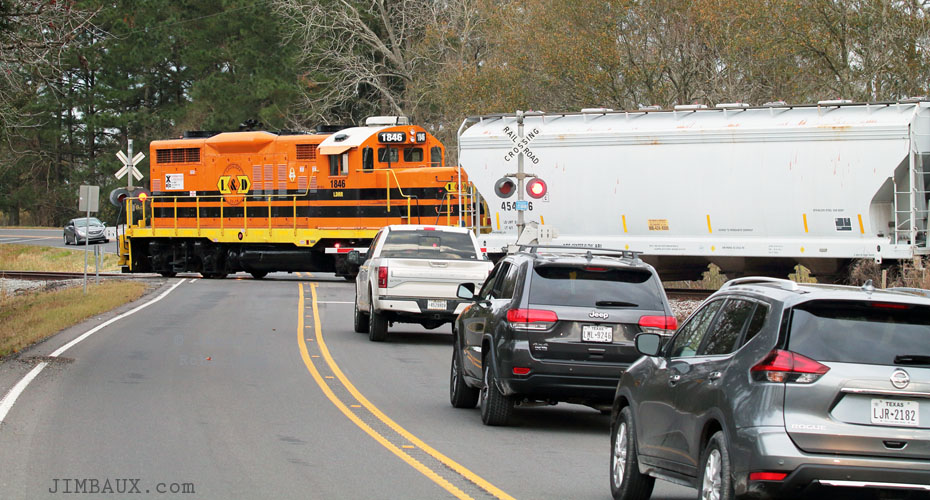
This line carried salt from the salt mine on Avery Island until the 1990s.
The 1846 pulled those white hopper cars (I guess for frac sand) out past the carbon black hopper cars and then shoved the carbon black hopper cars farthest down the stub.

I guess that the 1846 is the only locomotive on L&D’s roster with that neat little curved dynamic brake grid bump thing, and I guess the first such locomotive on the roster since the GP9s left the property. (The dynamic brake thing on the GP38s is more angled.)
I should have kept going in the direction of home, but I couldn’t help myself.
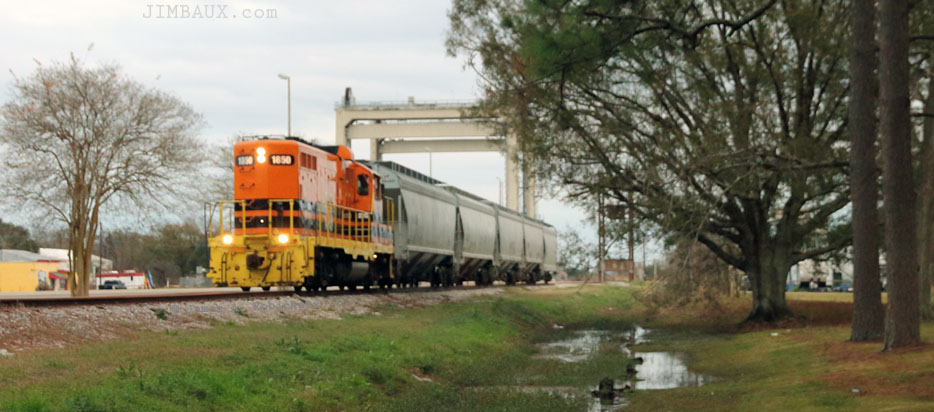
Emma was the best place to have said goodbye to this train, but, silly, stubborn me, I couldn’t help myself but to chase it to Delcambre and photograph it there, as fuzzy as it looks here.
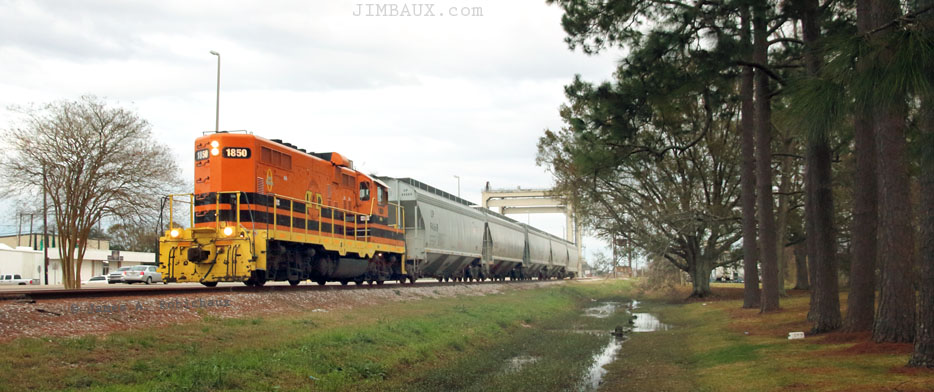
I must do better than this, but, given how dark the skies are getting, can I?
Yes, I can!

This is one of my favorite views on the Abbeville Branch, as it ties in much of the community of Delcambre, including the lift bridge.
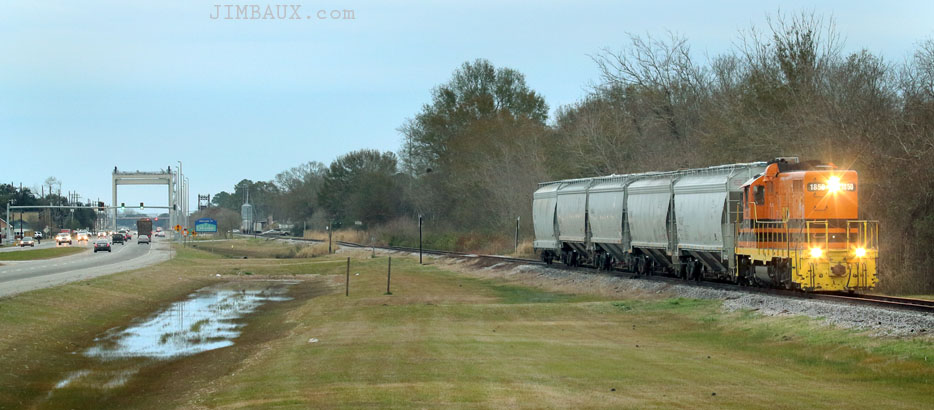
This is really where I should have quit and gone home.
But I had to get one more shot of the train, I guess, as it arrived in Erath at 17:11.

Now, it really is too dark, and it really is time to quit.
I assume that the train pulled all nine cars, all hopper cars, that were at the mill in Abbeville.
That, my friends, really is all that she wrote. Maybe I’ll be back here around Mardi Gras or spring break.
Merci.
Jim

{ 2 comments… read them below or add one }
Enjoying your splendid photos while enjoying a second cup of coffee on Sunday afternoon ☕?☕
Howard Bingham ?
ALWAYS good hearing from you! Better a couple months late than not at all! Keep u the work, my friend!
Brian
You must log in to post a comment.